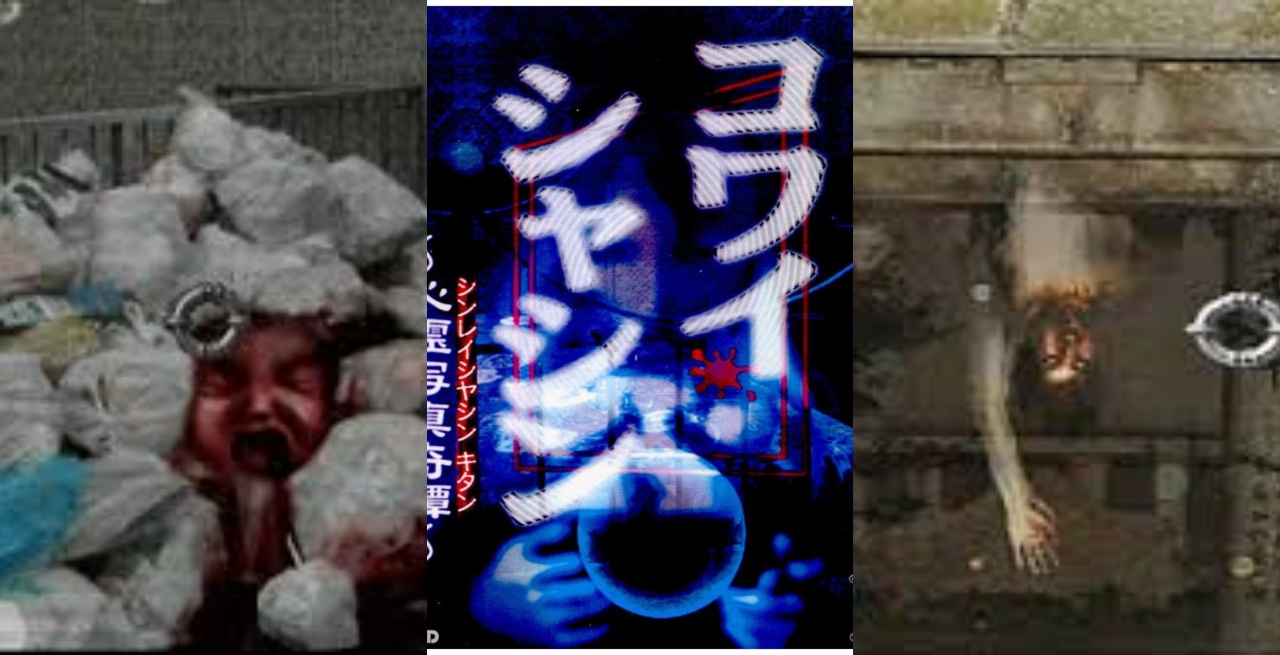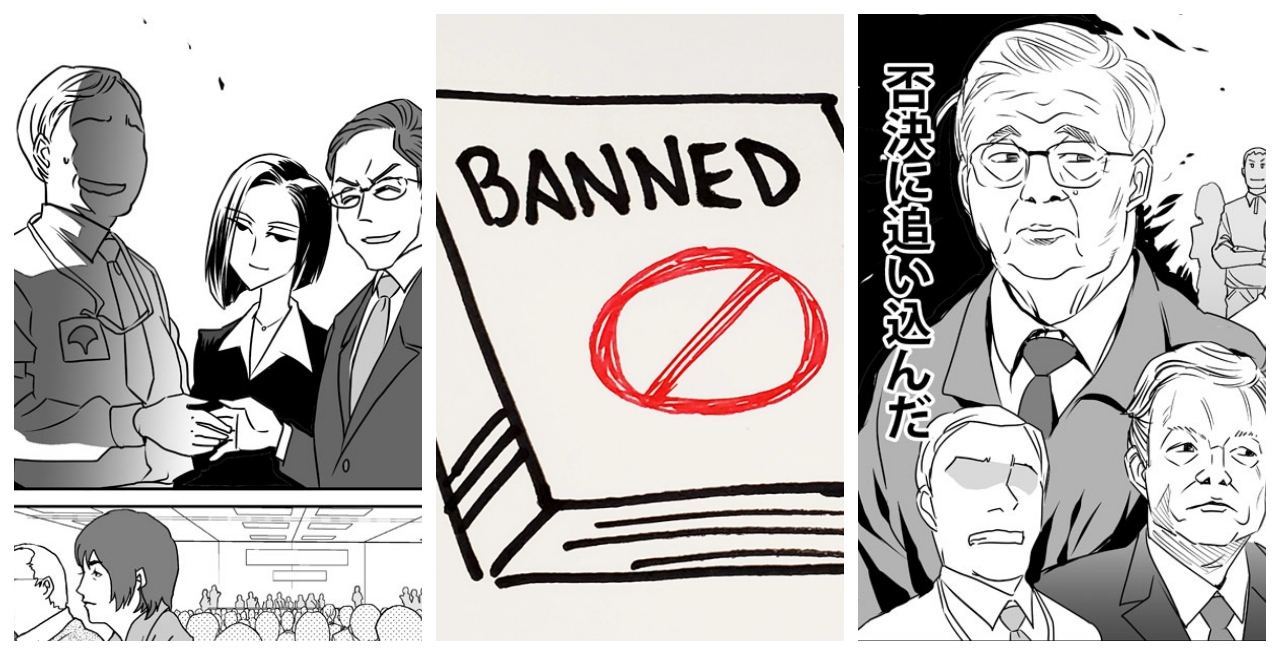
Hi fellow weirdos! Today we are discussing an obscure controversy that actually changed the whole Japanese adult video game industry. Dubbed “The Saori Incident” in the press, this 1991 affair involved a sexy computer game, a delinquent and hormonal junior high school student, and the literal creation of an ethical regulation organization.
What’s this game even about? How awful can be that created all this outcry? Well, as always, the answer is not that simple, but let’s try to unpack this and, on the way, learn a bit of Japanese media history.
Let the moral panic begin

Tsutomu Miyazaki and his room
In the late 80s, the infamous Tsutomu Miyazaki, The Otaku Killer, abducted and murdered four girls between 4 and 7 years old in Tokyo and Saitama prefecture. After his arrest on July 23 of 1989, the public wanted answers about what would cause someone to act this way. Miyazaki’s modus operandi was cruel and perverse, but on the outside, he looked like anyone else. If anything, his appearance indicated he was just another weird but, overall, harmless otaku.
When the authorities started to investigate his home, they found a bedroom full of manga, anime merchandising, and, above all, more than 6000 videotapes. Less than 50 of them contained straight-up illegal material, but the rest was full of anime and horror movies. As expected, this information, along with photos of his stash, made their way to the press.
Being the media always the easiest target to blame when people need a concrete culprit, the public and the government started a crusade against anime, manga, and related content. The surface-level consensus was that violent or sexual content made Miyazaki a murderer so, to prevent this from happening again, more regulations needed to be put into action.
This initiative eventually led to the revision of the youth protection and development ordinances and, of course, a lot of paranoia. PTAs and parent associations went hard against fictional works depicting violence and adult content, including Dragon Ball, Berserk, and the Fist of the North Star. Some authors fought against this new movement, while others started to self-regulate to avoid the hassle.
As time passed, it seemed that the main enemy was identified and successfully targeted, but another one was flying under the radar until then. It would not take long before it caught the eye of distraught parents and all thanks to a single teenage boy.
Enter The Saori Incident

Game cover
Japanese adult video games had been around for a good while back then. Since the early 80s with the rise of more accessible computer systems, a portion of the industry focused on the sort of content. Even now-famous companies like Enix, Square, and Nihon Falcon started this way before becoming mainstream.
However, while adult video games had their public and were profitable, they were still something of a niche. Computers were still expensive, and otaku always had a bad reputation, even before Tsutomu Miyazaki, so this genre was still not as widespread as it is today. This worked to the manufacturer’s benefit since said anonymity kept them away from the public eye. They had no clear regulations and, for better or worse, this translated into unboundedness. On one side of the spectrum, you had harmless practices like adding a command to remove the mosaic censorship and, on the other, you had the freedom to go to the darkest narrative corners if you wanted.
All this free-range context came to an end when a male Kyoto junior high school student decided he wanted a copy of “Saori- House of Beautiful Girls”. Produced by the FAIRYTALE company, this title basically centered on the aforementioned Saori, a young woman who is kidnapped and imprisoned in a mansion. There she experiments with a series of extreme adult hallucinations.
As you would expect, there were reasons why the boy wanted the game and why he would not purchase him himself. This conundrum led him to steal a copy from a local game store. When a clerk found out, he called the cops, and the teen was arrested. During the investigation, the authorities examined the game and were horrified at how pornographic it was. In November of the same year, the Kyoto police conducted a search in the FAIRYTALE’s headquarters and related businesses such as the publisher’s Kirara and parent company JAST. This ended up with the president of the distribution department being arrested under Article 175 of the Japanese Criminal Code.
Reaction to the Saori Incident
In response to the Saori Indicent, the Japanese adult gaming industry was forced to back down. The problem was there was no unified standard, so there was always the risk of unwittingly unleashing a legal fiasco. Due to the confusion and need for organizational defense, manufacturers created Sofurin, the Ethics Organization of Computer Software (EOCS).
The job of Sofurin consists basically to screen adult videogames and see if it falls into either of the following categories:
- General software for all ages
- General software recommended for ages 12 and up
- General software recommended for ages 15 and up
- Sales are prohibited to persons under 18
Sofurin logo for R18 videogames
While this review is not legally binding, a game released without this organization’s blessing has the risk to limit its distribution greatly. Also, since Sofurin’s ethical code forbids the depiction of people under 18 years old, this created an impact on how school-age characters were portrayed and defined in-universe. For example, the inclusion of elements alluding to younger children’s attire in this kind of game is banned and certain keywords referencing certain demographics are strictly forbidden.
As for the game itself, after the Saori incident, the title was discontinued and treated by its creator and distributors as if never existed. Other works by FAIRYTALE were revised and censored before being re-released. The brand did not disappear but after many restructuration and merges with other parent companies, the name fell into obscurity.
Final thoughts
Ultimately, the Saori Incident served as a catalyst for change, driving the Japanese adult video game industry towards a more regulated approach. It stands as a testament to the complex interactions between media, societal concerns, and the ongoing balancing act between creative freedom and ethical considerations.
Whether you think this was a good or bad move, this is up to you. In the end, the only thing we can do is be mystified about how a simple act of petty theft ended up restructuring video games in Japan as we know them now.
More Japanese Deep Dives
Hello, fellow weirdos! Today, we are delving into the Kowai Shashin, a purportedly cursed Japanese video game with a fascinating marketing strategy that incorporates urban legends and exploits the naivety… Imagine yourself 12 years ago. You are an anime and manga fan who now has even more access to your favorite shows than ever before thanks to internet massification. Things… In the early 2000s, anime experienced a surge in popularity among Western audiences, marking a peculiar time for anime fans. However, as this unique form of animation gained mainstream attention,… Hi fellow weirdos! This is Javi again, researching for you to bring you another interesting bit of Japanese media. We have previously discussed the term “Denpa,” which, according to Jisho.org,…Japan Deep Dive: The Curse of Kowai Shashin (2002)
The Year Manga was Banned (But Not Really): A Deep-Dive Into Bill 156
Yu-Gi-Oh Hangman Card Urban Legend – The Cursed Game Card
Denpa Visual Novels – The Big Three Denpa Games
Hi everyone! I am Javi from the distant land of Santiago, Chile. I grew up watching horror movies on VHS tapes and cable reruns thanks to my cousins. While they kinda moved on from the genre, I am here writing about it almost daily. When I am not doing that, I enjoy reading, drawing, and collecting cute plushies (you have to balance things out. Right?)



